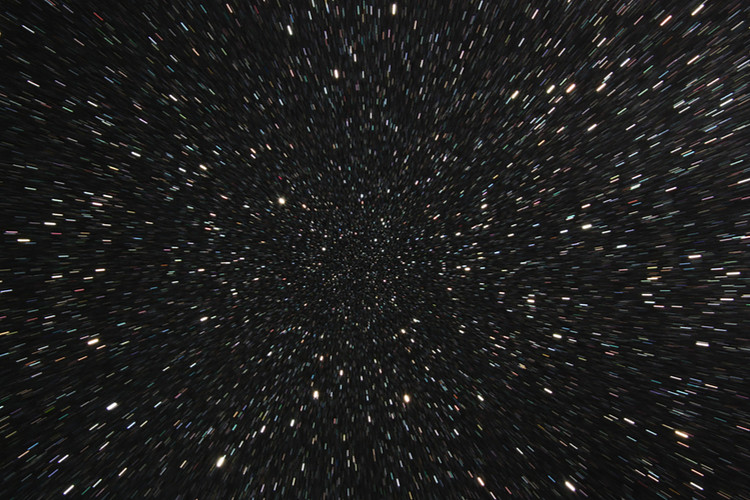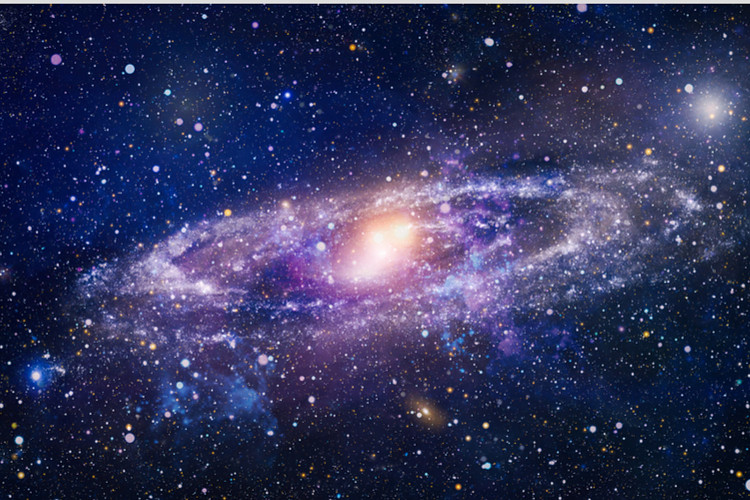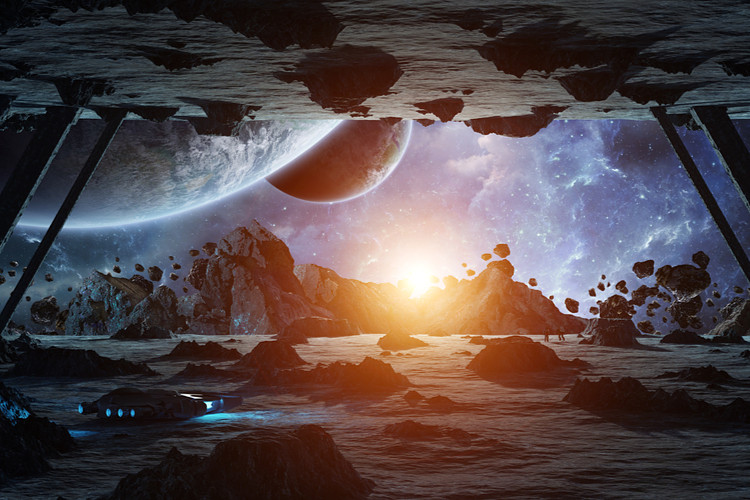The famous Star Wars opening crawl, “A long time ago in a galaxy far, far away…” conjures up a distant fantasy world setting. We may assume the story takes place in a different, very far-off galaxy from our own, perhaps billions of years ago.
Yet, the Star Wars galaxy could be closer to us than we think. Based on science, it seems likely that this galaxy is in our universe.
According to a Wired article, the Star Wars galaxy formed about 9 billion years after the big bang. If this is the case, the galaxy of Star Wars could be part of our universe’s progression, possibly the same galaxy as ours.
What galaxy does Star Wars take place in? While the Star Wars films do not specify, it seems probable that it is a galaxy in our Local Group.
The Star Wars and Milky Way Galaxies

“The Galaxy” is what Wookieepedia calls the galaxy of Star Wars. Similar to the Milky Way, this galaxy contains over 400 billion stars and more than 3 billion habitable systems.
In comparison, the Milky Way is estimated to have up to 400 billion stars, 100 billion planets, along with 300 million habitable planets. Both the Milky Way and Star Wars galaxies have massive black holes at their centers, and both are spiral galaxies.

Spiral galaxies are one of four main types of galaxies, each one taking on a distinct shape from collections of stars, gas, and dust.
Spiral galaxies contain flat and wide disks of rotating gas and dust. Some spirals, like the M51 Whirlpool galaxy, have wide-spread arms.
Elliptical, Peculiar, and Irregular are the other three types of galaxies. All four galaxy types are forged and kept in place by gravity and dark matter.
Knowing that the Star Wars galaxy is a spiral galaxy helps narrow down the possibilities.
Spiral galaxies have spiral structures that extend out from the center into galactic discs and hence are distinctive from the other three types. The Milky Way and two other galaxies near us are this type.
Some fans speculate that the Star Wars movies and television shows take place in the Milky Way. Some websites compare aspects of the Star Wars movies with other science fiction series.
However, it seems more likely that the Star Wars galaxy is nearby our own. By looking at Star Wars Episode VII: The Force Awakens, we can conclude that the Milky Way is NOT the Star Wars galaxy.
The main evidence is the holographic image shown at the end of this movie. ‘The Galaxy’ does not include “a bar,” or structure across the middle of the galaxy. But the Milky Way does have such a bar.
We need to look beyond the Milky Way and intersect Star Wars and science to find the correct galaxy.
Star Wars and Andromeda
Although the galaxy of Star Wars is not definitely known, it seems likely that it is the Andromeda Galaxy. A main piece of evidence comes from Star Wars Episode V: The Empire Strikes Back when we see a spiral galaxy.
At the end of The Empire Strikes Back, we see Luke Skywalker, Princess Leia, R2-D2, and C-3PO looking out at a spiral galaxy.
It appears that they are looking out at the Milky Way, but that is unlikely.
This scene from The Empire Strikes Back appears to be an artist’s conception of a spiral galaxy. One of the most photographed spiral galaxies is Andromeda, with images taken as far back as the 1800s.
Most galaxies are extremely far away from our home galaxy, the Milky Way. Our Local Group of galaxies consists of those located within about 5 million light-years of space. Andromeda is within the Local Group of galaxies.
The Andromeda galaxy is known for being the closest large spiral galaxy to the Milky Way. This galaxy is about 2.5 million light-years away and is actually visible with the unaided eye.
The Triangulum Galaxy is the next most likely location of the Star Wars galaxy. This spiral galaxy is also part of our Local Group and is about 2.7 million light-years away.
The Milky Way is about twice the size of the Triangulum Galaxy, and the latter is thus the third-largest member of our Local Group. While this could be a candidate, images of the Triangulum Galaxy do not match the scene in The Empire Strikes Back.
On the other hand, images of the Andromeda galaxy correspond well with this movie scene. And, another film provides evidence that Andromeda is most likely the galaxy we are looking for.
E.T., the Extra-Terrestrial, Points to Andromeda
In Star Wars Episode I: The Phantom Menace, a group of aliens that look like E.T., from the 1982 Steven Spielberg movie, made an appearance in the Galactic Senate. Wookieepedia specifies that this species is known as the Asogians.
The novel E.T.: The Book of the Green Planet helps clarify. The Asogian’s home planet is Brodo Asogi, located far out in the Star Wars galaxy, near the border of the Outer Rim Territories and Wild Space.
Hence, E.T.’s species traveled a great distance to attend the Senate meeting, but did not leave the Star Wars galaxy.
E.T. himself traveled an estimated 2.5 million light-years to Earth. So, the galaxy he came from cannot be the Milky Way. E.T. appears to have arrived from a galaxy within the Local Group, as described above.
The tagline for the movie E.T. indicates that he is 3 million light-years away from his home planet when on Earth. Between E.T. and real science, we start to see how Andromeda could be the galaxy we are looking for.
What Galaxy Does Star Wars Take Place In?
While it is not likely that any official source for Star Wars will name Andromeda as the real galaxy for the films and television series, it does seem to be the most plausible location.
Fans have speculated about our own Milky Way galaxy as the setting for Star Wars, but it does not match up as well.
The Empire Strikes Back and actual science seem to indicate a galaxy other than the Milky Way.
However, there are two trillion galaxies in the known universe, so Star Wars fans will surely continue to debate the exact location of the galaxy.

